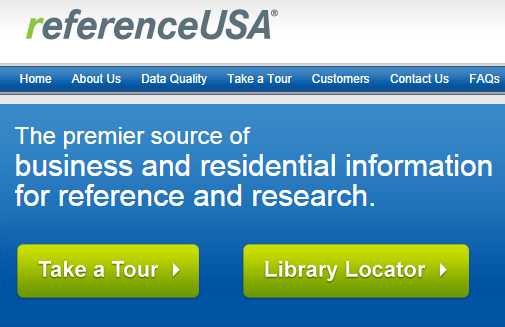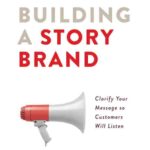In the age of digital transparency, making a “cold call” is more about strategy than surprise. Gone are the days when salespeople blindly reached out to prospects with little more than a name and a phone number. Today, successful entrepreneurs and savvy sales professionals know how to turn cold calls into warm, relationship-ready introductions by doing just a bit of homework.
Let’s face it—your time is valuable. So is your prospect’s. If you’re not taking a few minutes to prepare before reaching out, you’re wasting both. The good news? With the internet and a wealth of data tools, warming up any call is easier than ever. In fact, I’d argue that there’s no such thing as a cold call anymore—at least not for those willing to prepare.
Start With the Company Website
Before dialing a single number, start with the company’s website. Most business websites provide a goldmine of insight—everything from company history and leadership bios to press releases and product offerings. Pay special attention to the “About Us” or “Team” pages. Here, you’ll often find the names and roles of key personnel, including decision-makers like the CEO, CFO, or Director of Operations.
Understanding what the company does, its mission, and recent initiatives can give you powerful talking points. It shows you care enough to research, and it instantly elevates the quality of your conversation.
Go Beyond Google—Get Strategic With Your Search
Next, take your research up a notch by Googling the names of the company’s key players. You’re not trying to stalk them—just trying to understand them. A basic search might pull up:
- LinkedIn profiles that detail their career journey
- Facebook posts that reveal hobbies and personality
- Twitter/X accounts that reflect opinions or industry expertise
- Articles, interviews, or press releases they’ve been mentioned in
This information isn’t just trivia. If you discover that your target contact recently spoke at a conference or published a blog post, referencing that in your outreach shows genuine interest. It makes the interaction more human and less transactional.
Use OpenCorporates for Verified Business Details
Before making a call, take a moment to research the company on OpenCorporates, the largest open database of companies in the world. This free resource offers verified, official business registration data from over 140 jurisdictions. It’s ideal for confirming legal status, ownership history, and jurisdictional information—especially if you’re trying to validate that a business is legitimate or identify its registered officers.
While it won’t give you detailed bios or social insights, OpenCorporates excels at providing hard facts that often go unnoticed—like when the company was founded, who the registered directors are, or if the business has undergone any name changes. These nuggets of information can lend credibility to your outreach and may even help you avoid scams or time-wasters.
Knowing a company’s legal footprint, structure, and registration status demonstrates that you’ve done your due diligence. It sets a professional tone right from the start and gives you talking points rooted in fact, not fluff.
Use Hunter.io to Find Verified Email Addresses
Sometimes, the biggest hurdle isn’t what to say—it’s knowing where to send it. That’s where Hunter.io comes in. This tool is designed specifically to help you find email addresses associated with a company’s domain name. Just enter the business website URL, and Hunter will return a list of publicly available email formats, such as jane.doe@company.com or info@company.com.
It’s a huge time-saver when you’re trying to connect with someone directly, especially if their contact information isn’t listed on the company’s website. Hunter also lets you verify whether an email is still active, reducing bounce rates and increasing your chance of landing in the right inbox.
While Hunter doesn’t offer bios, job titles, or company background, it excels at that one crucial step in the sales process: getting your message into the right hands. Pair it with insights from tools like LinkedIn or OpenCorporates, and you’ll not only know who to contact—but exactly how to reach them.
Tap Into Library Tools Like Data Axle
Many public libraries offer access to professional databases that are usually paywalled elsewhere. One of the most powerful is Data Axle (formerly known as ReferenceUSA). This tool can help you search both businesses and consumers using lifestyle and interest data.
Related Post: Video: Tutorial on How to Use the Data Axle (Formerly Reference USA) Business Database and Video: Tutorial on How to Use the Data Axle (Formerly ReferenceUSA) LifeStyle Database
Here’s how it works: if you know the name of the person you’ll be contacting, you can often find consumer profile information that reveals their lifestyle preferences and purchasing behavior. This kind of insight lets you tailor your pitch more effectively—because let’s face it, a golf analogy is far more likely to resonate with an avid golfer than someone who prefers hiking on the weekends. But it goes deeper than individual interests. By identifying shared affiliations or values—like being part of the same industry association, alumni group, or even a fanbase—you tap into what’s known as a “We Group.” These shared identities create an immediate sense of trust and familiarity, dramatically increasing the chance of a positive response. When someone sees you as part of their “tribe,” the walls come down faster—and the sales conversation becomes more natural, authentic, and productive.
Related Post:
Call it marketing intelligence or digital sleuthing—it gives you an edge that generic sales scripts never will.
Cold Calls Are a Mindset, Not a Reality
The truth is, the term “cold call” is outdated. If you’ve done your homework, what you’re making is a strategic outreach. You’re calling with a sense of the company’s needs, an understanding of the person you’re speaking with, and ideally, a message that aligns with their goals.
With tools like LinkedIn, OpenCorporates, Hunter.io, Google, Facebook, and Data Axle, you can:
- Know who you’re calling
- Understand what matters to them
- Anticipate objections
- Offer tailored solutions
Even a few minutes of research can help you craft a compelling opening line, personalize your offer, or avoid pitfalls that would otherwise kill the call.
Ask Yourself: Are You Showing Up Cold or Calculated? The difference between success and failure in a sales call often boils down to one thing: preparation. Your competitors might still be dialing blind, but that’s an opportunity for you to shine.
What tools do you use to warm up your sales outreach? Could you be doing more to understand your customer before you reach out?












